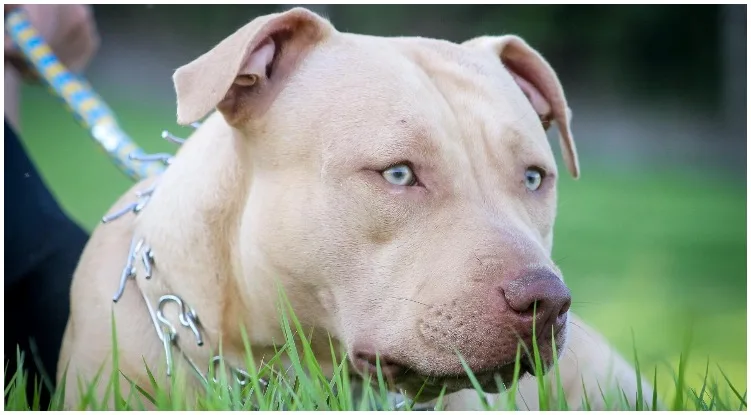You probably came here to learn what a Blue Fawn Pitbull is, huh? The Blue Fawn Pittie is a variety of the Pitbull, and no — they aren’t sky blue. However, their color is still pretty cool. They are similar in temperament to other differently colored Pitbulls. It’s just that their silvery-blue coat and red nose set them apart.
You are probably aware of this fact that Pitbulls were initially bred as fighting dogs. But, Blue Fawn Pitbulls are falsely labeled as aggressive pets. However, the fact that any dog breed can show aggression if not given proper training and socialization is often overlooked.
These dogs, just like all others, can be well-behaved if they are trained correctly and socialized early. So, you don’t have to be scared off.
Blue Fawn Pitbull Appearance
As always, we’ll start with the dog’s appearance. If you didn’t know, the most defining physical trait of blue fawn Pitties is their unique coat and nose color. Note that these pups have a red-colored nose and a silvery-blue coat that adds elegance to their muscular appearance.
When it comes to their build, blue fawn Pitbulls are muscular and stocky, and you probably guessed this one — their coat is a blueish fawn color. Also, they have a long sturdy body with a whip-like tail. Overall, their appearance exhibits power and strength.
Are Blue Fawn Pitbulls Rare?
Maybe, the next thing that comes into your head was a rarity of this dog. You should know that various kennel clubs around the world recognize blue fawn Pitties. They are just not as common as Pitbulls with other coat colors.
In fact, they are considered a rare variety because their coat color is the product of gene dilution, which we will go over in detail in the next section.
Blue fawn Pitbull genetics: How do they develop their blue fawn coat?
As we mentioned in the previous section, the blue fawn Pitbull got its coat from a recessive dilution gene. MLPH is the gene we are talking about , and its role is to fix and transport melanin-containing cells throughout the body.
Keep in mind that once the MLPH gene mutates, cell distribution is also affected, leading to a diluted coat color, as we see in blue fawn Pits. However, according to Animal Genetics, an institution that provides genetic services in the United States, black, brown, and yellow dogs are commonly affected by this genetic dilution.
Note that among these three colors, black doggies are more prone to the effect of this phenomenon and the resulting pup is what we call a blue or grey Pitbull. But, on the other hand, when a Pitty inherits the genes of brown-coated parents that are also carriers of two copies of the recessive gene, it will get a silvery-blue coat color and be considered a blue fawn Pitbull. Despite carrying two diluted recessive genes, the color of blue fawn Pits is not considered a fault because it does not result in any congenital anomalies. It only affects the color of the dogs’ skin, which makes them even more appealing.
Health
Like every owner, you are probably concerned about the health of these dogs. Luckily, the good news is that a blue fawn Pitbull can be by your side for a very long time. This beautiful and adorable pup’s lifespan is between twelve and sixteen years on average which makes them one of the most long lasting dogs on the planet.
Below is the list of, the most common health issues these dogs face and you should be aware of this:
2) Demodex
3) Parvovirus
If you think that this type of Pittie is the right fit for you, then you should find yourself one and start a long-lasting journey with him! Remember to adopt always instead of buying!

